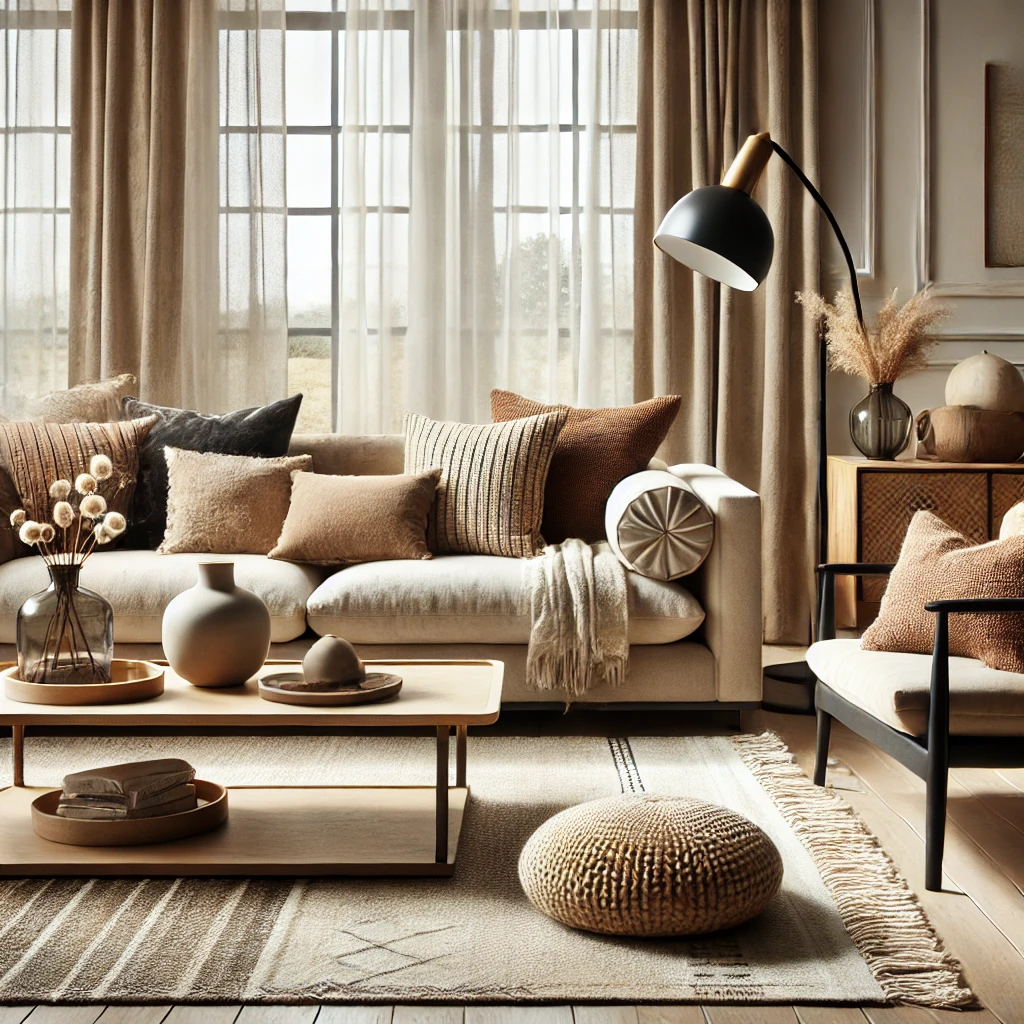Start with a Neutral Base
In your living room, a neutral base is the ideal starting point for experimenting with different textures. For your walls and larger pieces of furniture, like your sofa, go for muted hues like white, beige, or light gray. Various textures can be highlighted against a neutral backdrop without overpowering the room. After establishing a foundation that is neutral, you can add contrast by layering different materials like leather, wool, and wood. Incorporating additional textured components, such as throw pillows or rugs, is also made simpler with neutral hues, maintaining the harmony and aesthetic appeal of your design.
Combine Soft and Hard Materials
A dynamic living room must incorporate both hard and soft materials. This arrangement provides visual depth and helps the space feel balanced. For instance, you could put a sleek glass or wooden coffee table next to a luxurious velvet sofa. Harder textures like stone, wood, or metal add structure and elegance, while softer materials like fabric, cushions, and rugs add coziness and warmth. Soft and hard textures can be thoughtfully combined to create a refined yet welcoming feel that makes the room feel well-rounded and stylish.
Layer Textiles for Comfort
One of the simplest ways to incorporate texture and comfort into your living room is to layer textiles. Begin with a plush area rug and work your way up to linen curtains, cotton cushions, and wool throws. You can combine materials with various textures; for example, you could pair velvet or silk, which are smooth and shiny, with jute or wool, which are rougher materials. These layers give the space visual interest and coziness in addition to warmth. Creating a stylish and comfortable living area that feels both opulent and lived in requires experimenting with different textiles.
Add Natural Elements for Depth
Texture and depth can be effectively added to your living room by incorporating natural elements such as wood, stone, and foliage. A woven basket or ceramic vase adds a rustic touch, while a wooden coffee table or shelves can add warmth. Big or small, indoor plants also provide a natural texture that works well with almost any type of decor. Natural textures ground the space and give it an organic, harmonious feel. They are also aesthetically pleasing. By balancing the artificial and the natural, you can create a more dynamic and cohesive living space by incorporating these elements.
